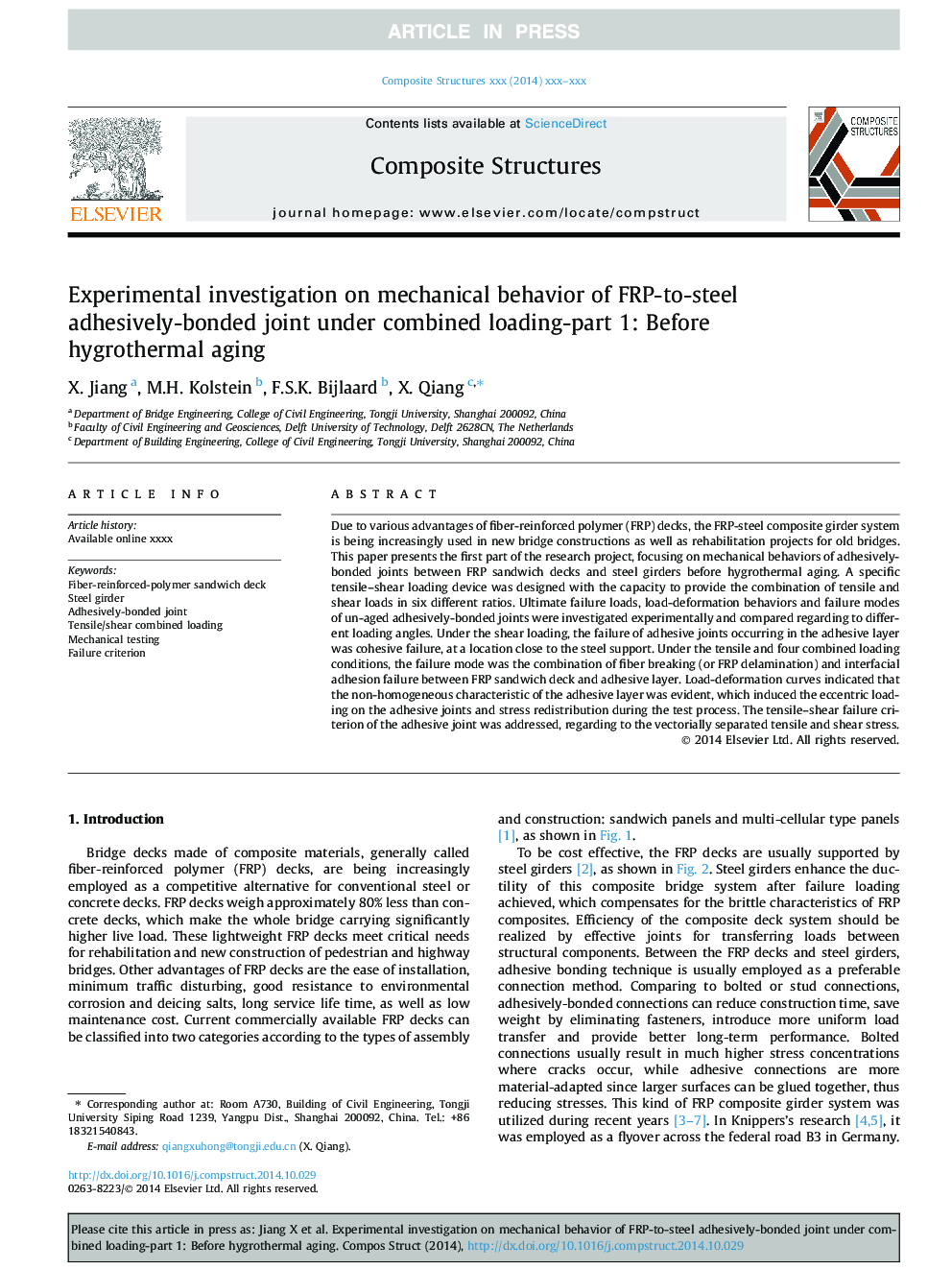| Article ID | Journal | Published Year | Pages | File Type |
|---|---|---|---|---|
| 6707066 | Composite Structures | 2015 | 15 Pages |
Abstract
Due to various advantages of fiber-reinforced polymer (FRP) decks, the FRP-steel composite girder system is being increasingly used in new bridge constructions as well as rehabilitation projects for old bridges. This paper presents the first part of the research project, focusing on mechanical behaviors of adhesively-bonded joints between FRP sandwich decks and steel girders before hygrothermal aging. A specific tensile-shear loading device was designed with the capacity to provide the combination of tensile and shear loads in six different ratios. Ultimate failure loads, load-deformation behaviors and failure modes of un-aged adhesively-bonded joints were investigated experimentally and compared regarding to different loading angles. Under the shear loading, the failure of adhesive joints occurring in the adhesive layer was cohesive failure, at a location close to the steel support. Under the tensile and four combined loading conditions, the failure mode was the combination of fiber breaking (or FRP delamination) and interfacial adhesion failure between FRP sandwich deck and adhesive layer. Load-deformation curves indicated that the non-homogeneous characteristic of the adhesive layer was evident, which induced the eccentric loading on the adhesive joints and stress redistribution during the test process. The tensile-shear failure criterion of the adhesive joint was addressed, regarding to the vectorially separated tensile and shear stress.
Related Topics
Physical Sciences and Engineering
Engineering
Civil and Structural Engineering
Authors
X. Jiang, M.H. Kolstein, F.S.K. Bijlaard, X. Qiang,
